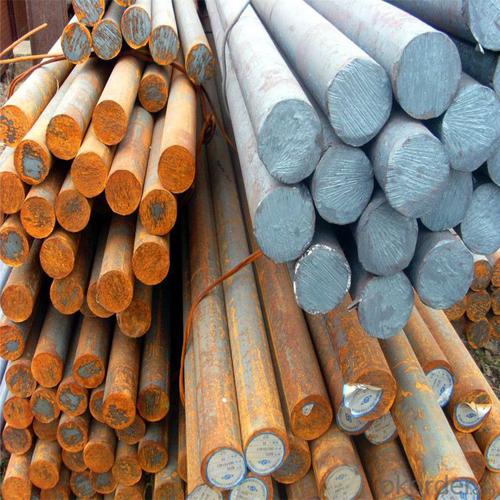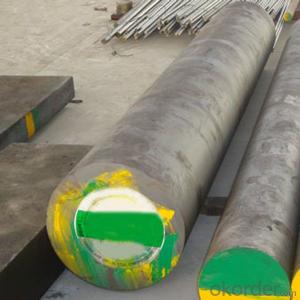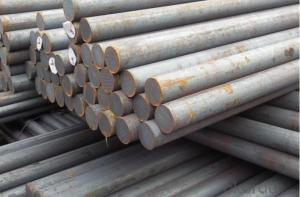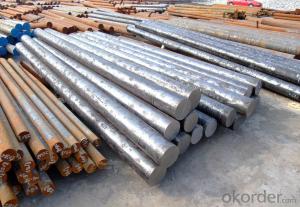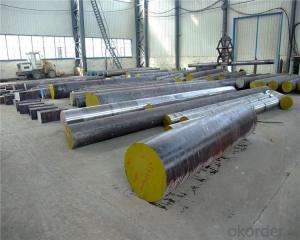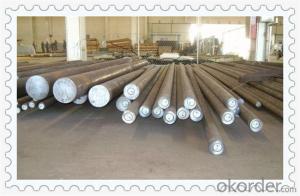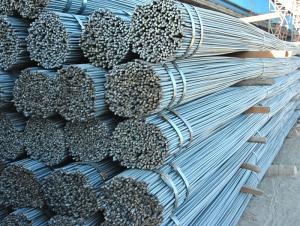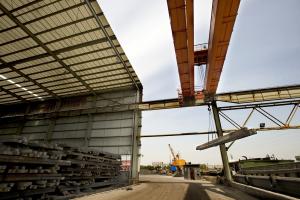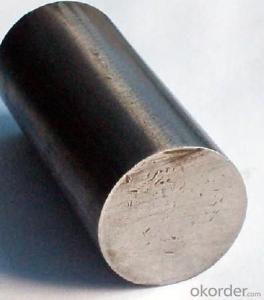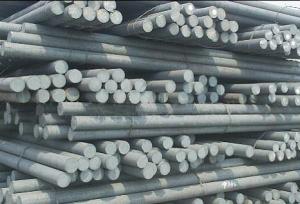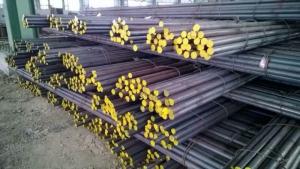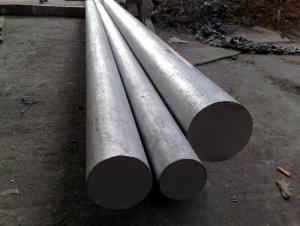High Speed Steel Tool Bar W18Cr4V2Co8(T5)
- Loading Port:
- Tianjin
- Payment Terms:
- TT OR LC
- Min Order Qty:
- 100 m.t.
- Supply Capability:
- 50000 m.t./month
OKorder Service Pledge
OKorder Financial Service
You Might Also Like
Specification
High Speed Steel Tool Bar W18Cr4V2Co8(T5)
Product Description of High Speed Steel Tool Bar W18Cr4V2Co8(T5)
1. Steel grade: W18Cr4V2Co8
2. Length: 6M-12M
3. Diameter: 16mm-300mm
4. Product range: round bar, flat bar, square bar
5. Technique: Hot rolled, forged, cold drawn
Specification of High Speed Steel Tool Bar W18Cr4V2Co8(T5)
Material | W18Cr4V2Co8 | Round bar | Dia(mm) | 16-300mm |
Process | EAF + LF + VD + Forged + Heat Treatment (optional) | Length (mm) | Max 12m | |
Heat treatment | Normalized / Annealed / Quenched / tempered | Flat bar | Thickness(mm) | 8-500mm |
Delivery condition | Hot forged +Rough machined (black surface after Q/T)+ Turned (optional) | Width(mm) | 70-200mm | |
Test | Ultrasonic test according to SEP 1921-84 D/d | Length (mm) | Max 12m |
Chemical Composition of High Speed Steel Tool Bar W18Cr4V2Co8(T5)
C | Si | Mn | Cr | Ni | Cu |
0.42~0.47 | 0.17~0.37 | 0.35~0.65 | ≤0.25 | ≤0.30 | ≤0.25 |
Photo Show of High Speed Steel Tool Bar W18Cr4V2Co8(T5)
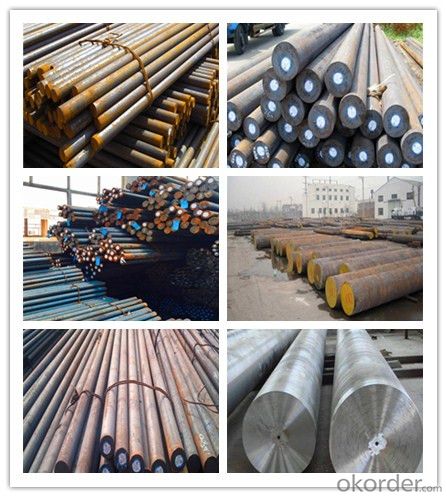
Packing and Delivery:
Packing in bundle package, or as customer's requirements.
Delivery Detail: 45 days after receiving the deposit.
Usage and Applications of High Speed Steel Tool Bar W18Cr4V2Co8(T5)
1. Steel round bar is used in a large number of architectural and engineering structures. Or it can be used in construction of plants for the production of steel house frames, high-voltage transmission towers, bridges, vehicles, boilers, containers, ships, etc.
2. And we can use this kind of product on the performance of the mechanical parts if the demand is not very high.
3. Some special material steel round bar can be used for main shaft of steamer, hummer shank, with big section and supper force.
Company Information
CNBM International Corporation is the most important trading platform of CNBM group.
Whith its advantages, CNBM International are mainly concentrate on Cement, Glass, Iron and Steel, Ceramics industries and devotes herself for supplying high qulity series of refractories as well as technical consultancies and logistics solutions.

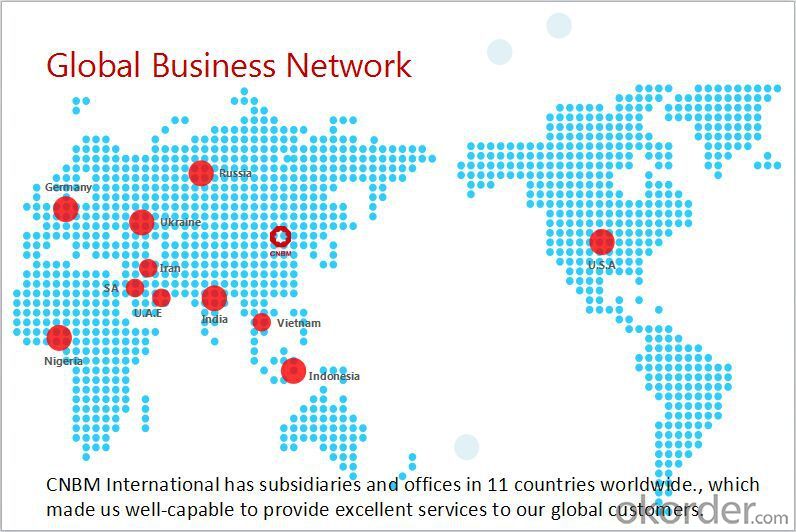
F A Q
1, Your advantages?
professional products inquiry, products knowledge train (for agents), smooth goods delivery, excellent customer solution proposale
2, Test & Certificate?
SGS test is available, customer inspection before shipping is welcome, third party inspection is no problem
3, Factory or Trading Company?
CNBM is a trading company but we have so many protocol factories and CNBM works as a trading department of these factories. Also CNBM is the holding company of many factories.
4, Payment Terms?
30% TT as deposit and 70% before delivery.
Irrevocable L/C at sight.
5, Trading Terms?
EXW, FOB, CIF, FFR, CNF
6, After-sale Service?
CNBM provides the services and support you need for every step of our cooperation. We're the business partner you can trust.
For any problem, please kindly contact us at any your convenient time.
We'll reply you in our first priority within 24 hours.
- Q: What are the different cutting methods for steel round bars?
- There are several cutting methods for steel round bars, including sawing, shearing, flame cutting, and abrasive cutting.
- Q: What are the chemical composition requirements for steel round bars?
- Steel round bars can have different chemical composition requirements depending on the specific grade or type of steel. Generally, carbon steel, alloy steel, and stainless steel are commonly used for making these bars. Carbon steel round bars consist mainly of iron and carbon, with small amounts of other elements like manganese, phosphorus, sulfur, and silicon. The carbon content can range from 0.08% to 2.1%, depending on the desired strength and hardness. These bars find widespread use in construction, manufacturing, and general-purpose applications. Alloy steel round bars contain additional alloying elements such as chromium, nickel, molybdenum, vanadium, and manganese. These elements are added to improve the mechanical properties of the steel, including strength, hardness, and resistance to wear and corrosion. The specific chemical composition requirements for alloy steel round bars can vary significantly depending on the desired properties and the specific alloy used. Stainless steel round bars are primarily composed of iron, chromium, and nickel, with smaller amounts of other elements like carbon, manganese, and molybdenum. The high chromium content provides excellent corrosion resistance, while the nickel content enhances strength and ductility. The chemical composition requirements for stainless steel round bars are typically specified by international standards such as ASTM or EN, which define the minimum and maximum allowable percentages of each element. In conclusion, the chemical composition requirements for steel round bars depend on the specific grade or type of steel being used, with carbon steel, alloy steel, and stainless steel being the most common types. The composition of these bars is carefully controlled to achieve the desired mechanical properties and performance characteristics for various applications.
- Q: How do steel round bars perform under static or stationary loads?
- Steel round bars perform exceptionally well under static or stationary loads. Due to their high tensile and compressive strength, they can withstand heavy loads without significant deformation or failure. The structural integrity and stability of steel round bars make them a reliable choice for various applications where static or stationary loads are involved.
- Q: How do steel round bars perform under fatigue loading?
- Steel round bars typically perform well under fatigue loading due to their high strength and durability. The round shape helps distribute stress evenly, reducing the likelihood of fatigue failure. Additionally, steel has a good fatigue resistance, allowing it to withstand repeated loading and unloading cycles without significant degradation in performance.
- Q: Can steel round bars be used for making tie rods?
- Yes, steel round bars can be used for making tie rods. Steel round bars are commonly used in construction and engineering applications due to their strength and durability. Tie rods are used to provide structural support and stability, and steel round bars are well-suited for this purpose. They have high tensile strength and can withstand heavy loads and tension, making them an ideal choice for tie rods. Additionally, steel round bars can be easily fabricated and welded, allowing for customization and versatility in the design and construction of tie rods.
- Q: How can I connect channel steel and round steel?
- First, the channel steel, channel cut, need to connect the length of the arc shaped gap, and then again and round steel arc surface welding, welding before the two kinds of materials to rust, and full welding.
- Q: What are the advantages of using precipitation-strengthened steel round bars?
- There are several advantages of using precipitation-strengthened steel round bars in various applications. Firstly, precipitation-strengthened steel round bars have enhanced mechanical properties, making them stronger and more durable compared to regular steel bars. The precipitation hardening process involves heat treatment, which allows for the formation of fine particles within the steel structure. These particles act as obstacles to dislocation movement, resulting in improved strength and hardness. Secondly, the enhanced strength of precipitation-strengthened steel round bars allows for the reduction of material usage while maintaining the desired level of structural integrity. This leads to cost savings in terms of raw materials and transportation, making it an economical choice for construction and manufacturing industries. Additionally, precipitation-strengthened steel round bars offer excellent corrosion resistance properties. The formation of fine particles during the precipitation hardening process creates a dense and uniform microstructure, which effectively blocks the movement of corrosive agents. This resistance to corrosion makes these bars ideal for applications in harsh environments or industries where exposure to corrosive substances is common. Another advantage of using precipitation-strengthened steel round bars is their ability to withstand high temperatures. The fine particles within the steel structure contribute to improved thermal stability, enabling these bars to maintain their strength and hardness even under elevated temperatures. This makes them suitable for applications that involve high-temperature operations, such as in the aerospace and automotive industries. Furthermore, the superior fatigue resistance of precipitation-strengthened steel round bars is an advantage in applications that require repetitive or cyclic loading. The precipitation hardening process enhances the material's resistance to fatigue failure, allowing it to withstand prolonged stress without undergoing significant deformation or failure. This makes these bars suitable for use in structures subjected to dynamic or fluctuating loads, such as bridges, cranes, and machinery components. In summary, the advantages of using precipitation-strengthened steel round bars include enhanced mechanical properties, reduced material usage, excellent corrosion resistance, high-temperature stability, and superior fatigue resistance. These advantages make them a preferred choice for various applications, ranging from construction and manufacturing to aerospace and automotive industries.
- Q: What is the difference between a solid and a hollow steel round bar?
- The main difference between a solid and a hollow steel round bar lies in their construction. A solid steel round bar is made entirely of solid steel material throughout its entire length. On the other hand, a hollow steel round bar has a hollow center, creating a tube-like structure. This design reduces the weight of the bar while maintaining its strength. Solid round bars are often used when high strength and durability are required, while hollow round bars are commonly used in applications where weight reduction is a priority, such as in construction or engineering projects.
- Q: Can steel round bars be used in the pharmaceutical industry?
- It is possible to use steel round bars in the pharmaceutical industry. Steel round bars are widely used in different sectors, including pharmaceuticals, because of their strength, durability, and versatility. In the pharmaceutical field, steel round bars can be applied for various purposes, such as producing equipment, machinery, and storage systems. These bars can be utilized to create pharmaceutical manufacturing equipment like mixers, reactors, and centrifuges, which necessitate robust and dependable materials to ensure effectiveness and safety in the production processes. Additionally, steel round bars can be employed in constructing storage systems like racks and shelves, providing a solid and secure solution for organizing pharmaceutical products and supplies. The corrosion resistance and ease of cleaning of steel make it appropriate for maintaining hygienic conditions in pharmaceutical facilities. Overall, steel round bars give the pharmaceutical industry a dependable and cost-effective material choice for diverse applications.
- Q: What are the advantages of using nickel-cobalt alloy steel round bars?
- One advantage of using nickel-cobalt alloy steel round bars is their exceptional strength and durability. The combination of nickel and cobalt enhances the overall strength of the steel, making it highly resistant to wear, corrosion, and high temperatures. Additionally, these round bars offer excellent fatigue resistance, making them ideal for applications that involve heavy loads and repetitive stress. Furthermore, nickel-cobalt alloy steel round bars exhibit good machinability and weldability, allowing for ease of fabrication and customization. Overall, these advantages make nickel-cobalt alloy steel round bars a reliable choice for demanding industries such as aerospace, automotive, and oil and gas.
Send your message to us
High Speed Steel Tool Bar W18Cr4V2Co8(T5)
- Loading Port:
- Tianjin
- Payment Terms:
- TT OR LC
- Min Order Qty:
- 100 m.t.
- Supply Capability:
- 50000 m.t./month
OKorder Service Pledge
OKorder Financial Service
Similar products
Hot products
Hot Searches
Related keywords






